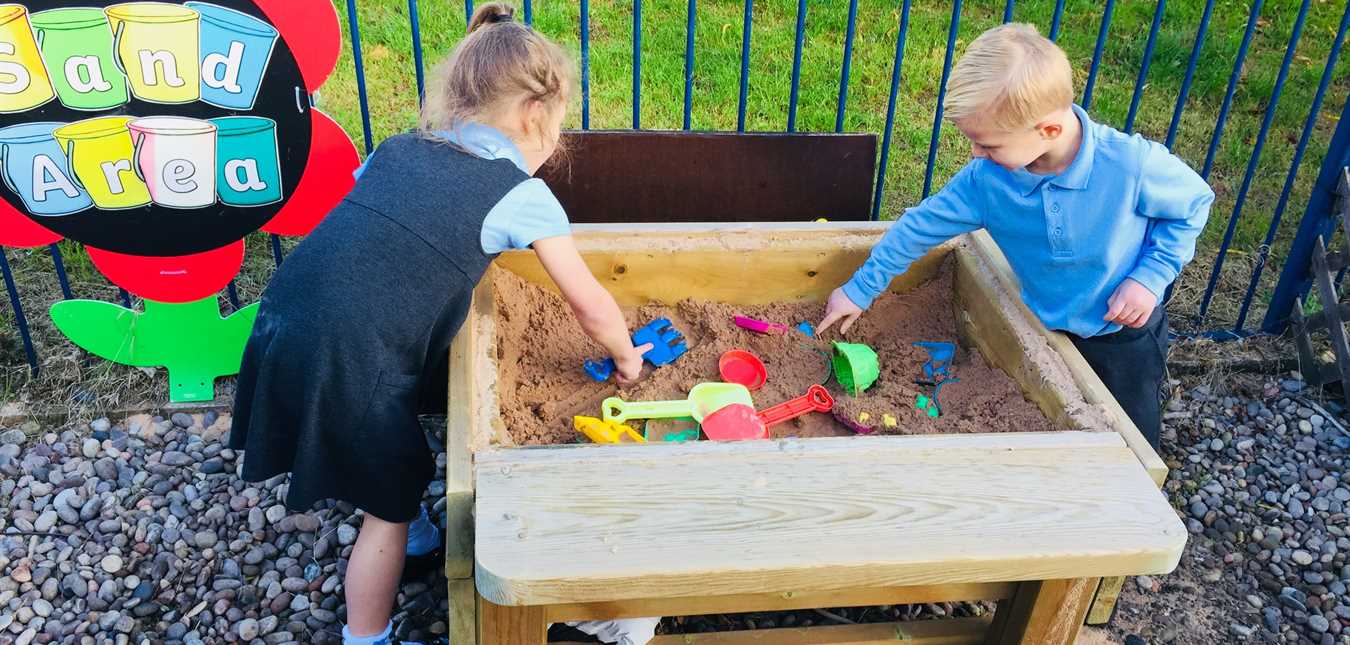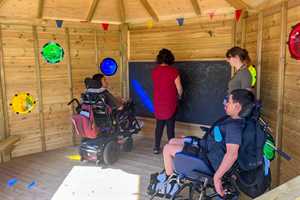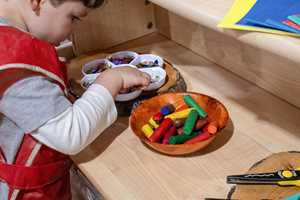
Special Educational Needs
Providing a Sensory Diet for Children with SPD, ADHD and ASD
As soon as we hear the word ‘diet’ we usually, naturally, think of food - or an imminent lack thereof! But a sensory diet is something entirely different, and can certainly feel a lot more enriching and satisfying!
A sensory diet is an individual’s personalised plan of daily activities, accommodations and adaptations that will help to meet their sensory needs, providing the sensory input they need to stay focused and organised.
Here we explore the importance of a sensory diet for children with Sensory Processing Disorder, ADHD and/or Autism Spectrum Disorders, and activities that can be scheduled in schools to facilitate a broad sensory diet following their individualised plans.
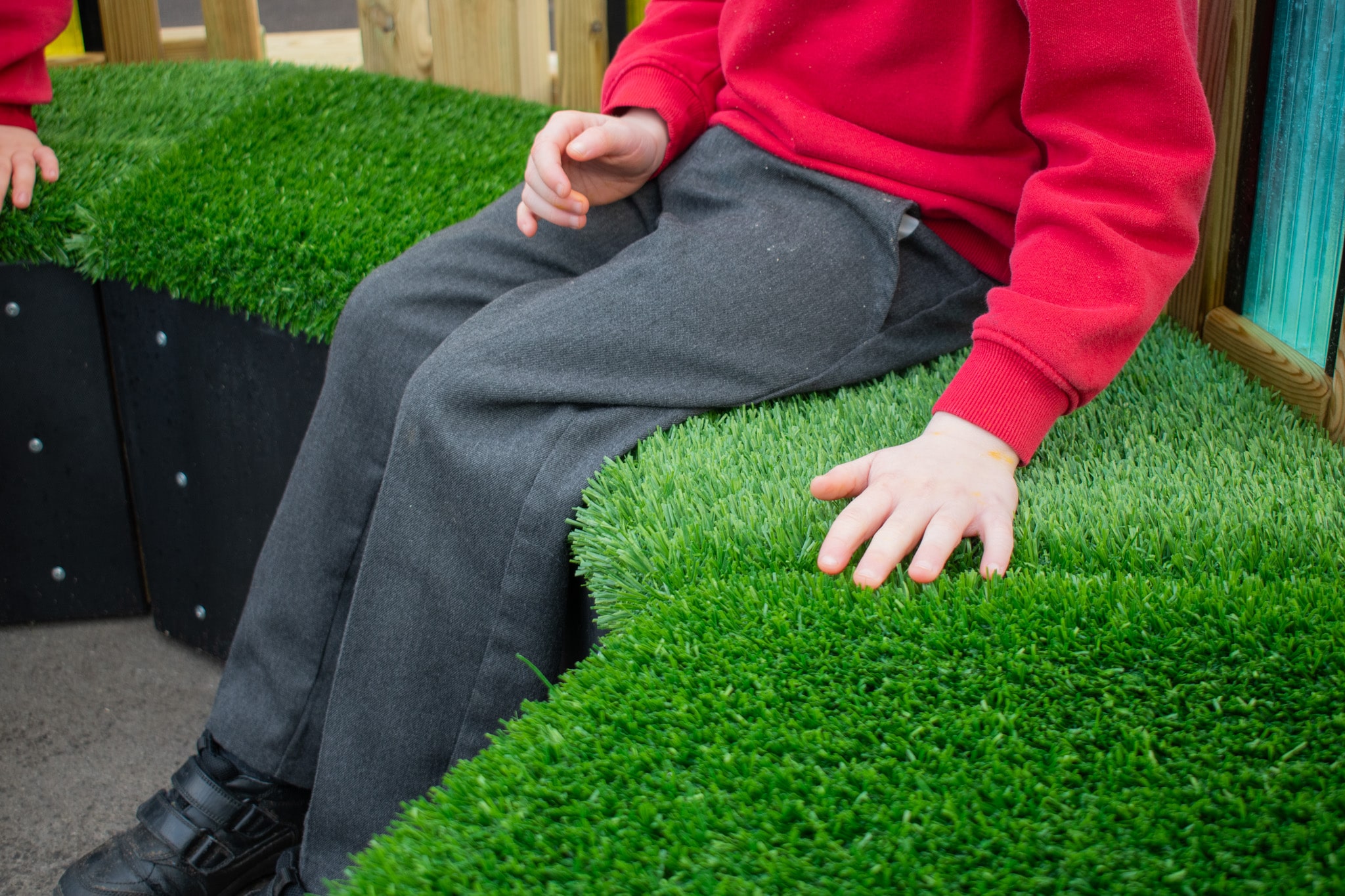
The concept of a sensory diet was created not all that long ago (depending on your perspective!) in 1991, by occupational therapists Wilbarger and Wilbarger. It’s based on the idea that every person requires a certain amount of activity and sensation in their daily life, to provide them with just the right level of alertness.
Everyone has their own sensory preferences, and a good personalised sensory diet will provide the balance of sensory input that each of us needs to remain comfortable, better able to feel and function at our best, throughout the day.
A child’s reaction to stimulus in their environment directly relates to how their body processes, and needs, sensory input. If a child has difficulties with sensory integration - that is the brain’s process of taking in information we receive from each of our senses, organising it and responding appropriately - it means this process happens unevenly and messages are scrambled.
They may be hyposensitive to their surroundings and need to take in loads of information to experience any stimulation through their senses at all. Or, they may be hypersensitive, and find even the smallest amount of information overwhelming.
Either way, this can cause a child intense discomfort, and leave them unable to feel and stay calm and focused. They may also have difficulties with motor skills, hand-eye coordination and balance too.
Professional Support
Although a separate condition in its own right, Sensory Processing Disorder is often a co-occurring condition for children who have Autism or ADHD - symptoms can interact together and vary substantially from child to child, just as we are all individuals!
A child’s occupational therapist is the best person to design their own sensory diet - it’s especially important to consult with an experienced OT when a child has difficulties with sensory processing, because they are best able to recognize their exact needs, and make the right recommendations for scheduling activities and adjusting sensory input in order to help them.
The main goal of a sensory diet is to help a child feel calm, centred, alert and organised - using specific activities scheduled throughout the day to meet the nervous system’s sensory needs and so to prevent the overload and overwhelm.
Knowing a child’s sensory profile, and encouraging them to participate in activities which help them to feel calm and regulated following a regular schedule, is key.
Ultimately, a good sensory diet can make an enormous difference to a child’s life and how they experience and enjoy the world. They’ll be better able to focus and interact with their environment and the people around them, and importantly, it can help them to feel less anxious, significantly improving their wellbeing.
Easy Sensory Playground Activities for a Great Sensory Diet
The school playground is the perfect place for (easily!) providing a full and varied range of activities that can activate all 7 of a child’s sensory systems. It’s really important to note here that it’s not just about movement for the sake of it.
A ‘movement break’ can of course be very helpful when children are tired, starting to switch off and need to regain focus. However, this may not always hit the spot - what really matters is the type of movement that children need to experience, scheduled regularly.
For example, a child’s sensory profile may include the need for ‘heavy work’ activities - that’s anything that pushes or pulls against the body - because it engages their sense of proprioception and helps them to feel centred. So, accommodations are needed to enable them to experience this kind of input throughout the day.
This can be super quick and easy to achieve, and so much more simple than it might first sound!
Here are some examples of ideal sensory activities that can be used daily in school as part of a sensory diet, following a child’s tailored sensory diet plan. Activities can be adjusted accordingly to take into account a child’s sensitivity to movement:
Vestibular
The vestibular system is found in the inner ear - it’s a sensory system that helps us to move and maintain balance, and experience a sense of gravity.
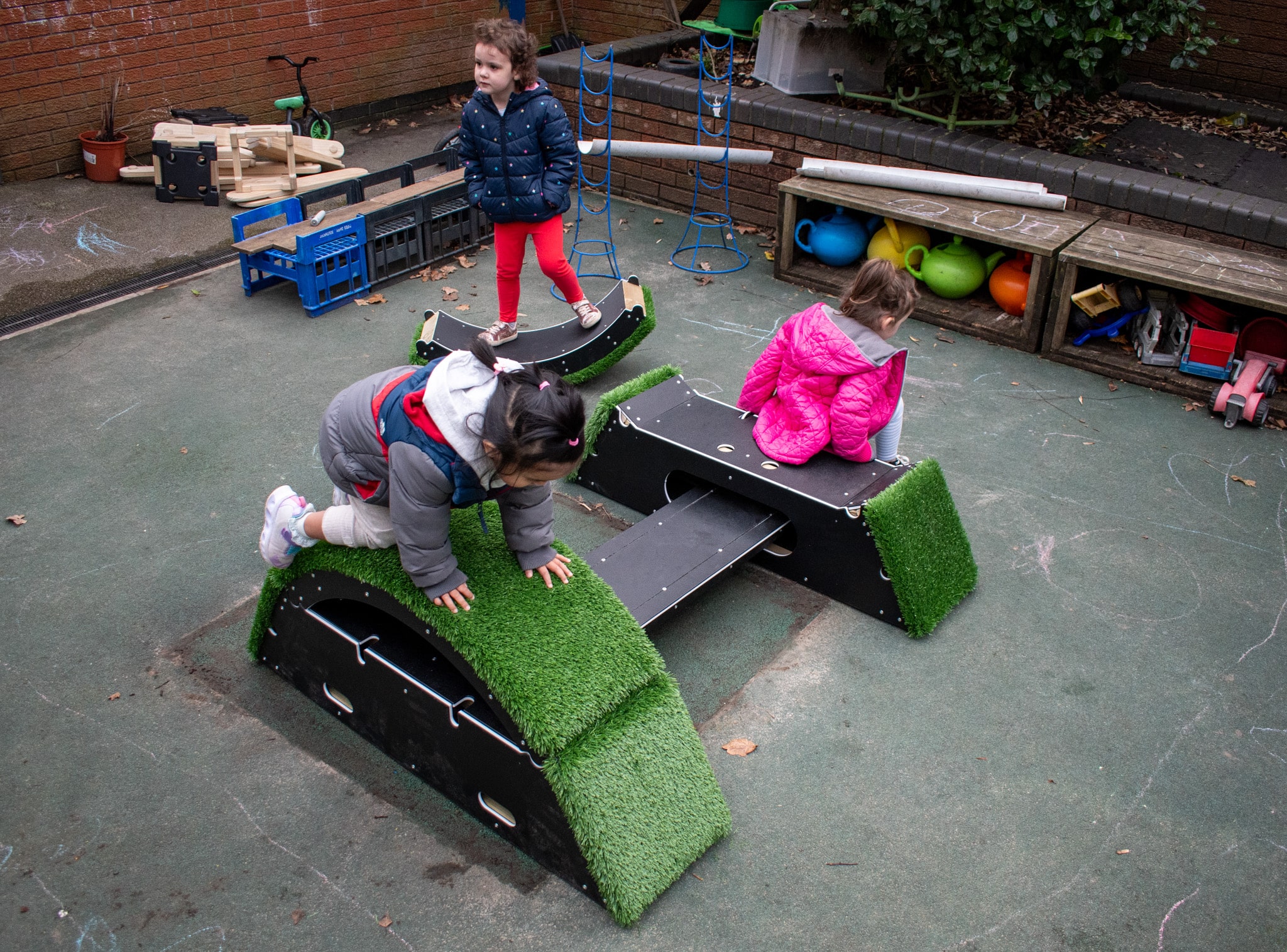
Movement-based activities to promote the vestibular sense stimulate the inner ear, simultaneously helping to improve balance, coordination, and body awareness. Try:
- Walking over beams and play bridges.
- Crawling through tunnels.
- Climbing around an obstacle course.
- Swinging on a swing.
- Rocking in a basket swing.
- Hanging on monkey bars.
- Swaying on a Dynamic Balance Block.
- Jumping on and off play equipment or jumping on a trampoline.
See: The Rockies, Play Builder, Get Set, Go! Blocks, Timber Swings, Playframes and Trim Trails
Proprioception
Proprioception is a sense of movement - body awareness and the ability to sense the position and movement of our body in the space around us.
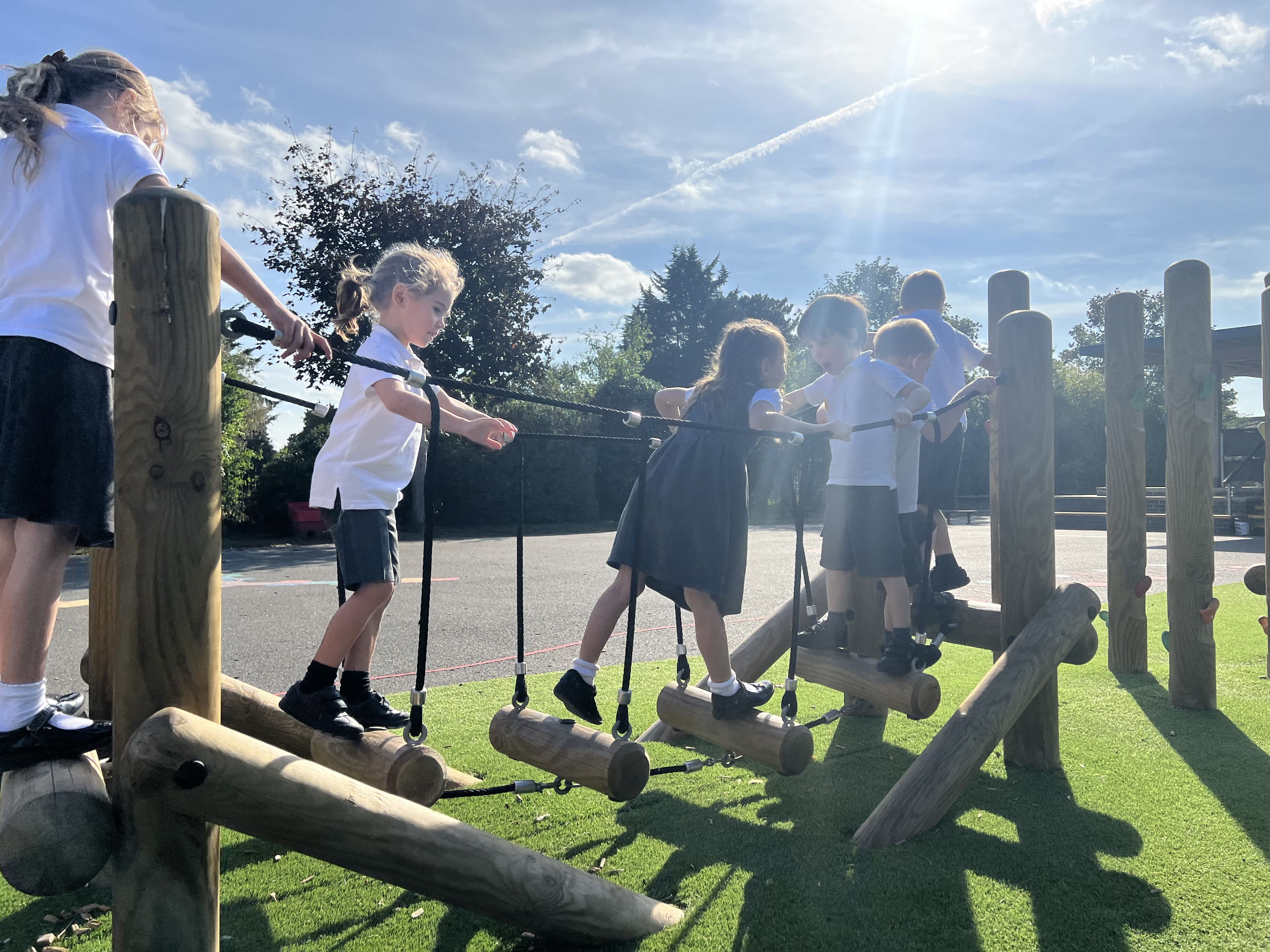
Proprioceptive input can be achieved through lifting, pushing, and pulling heavy objects, including a child working with and against their own body weight. Try:
- Climbing on monkey bars.
- Using pull up and roll over bars.
- Operating a rope and pulley system with different weighted items in the bucket.
- Digging through sand and mud.
- Lifting and carrying ‘heavy’ objects such as buckets of sand or water.
- Maneuvering objects to set up an obstacle course.
- Playing hopscotch or similar floor-based jumping games.
- Using trim trails and play frames where challenges involve holding onto ropes and beams to pull and push against their own body weight.
- Push ups on the ground or against a wall.
- Construction play with heavy blocks (stacking and building towers is ideal).
See: Playframes and Trim Trails, Playground Markings, Rope and Pulley Materials Mover, Mud, Sand and Water Play, The Rockies, Play Builder, Get Set, Go! Blocks
Visual
Sometimes a classroom environment can be too visually stimulating and children can find this overwhelming. Similarly in a playground environment, while variety in visual stimulation is important, having a balance of natural-coloured resources can help to reduce the overload.
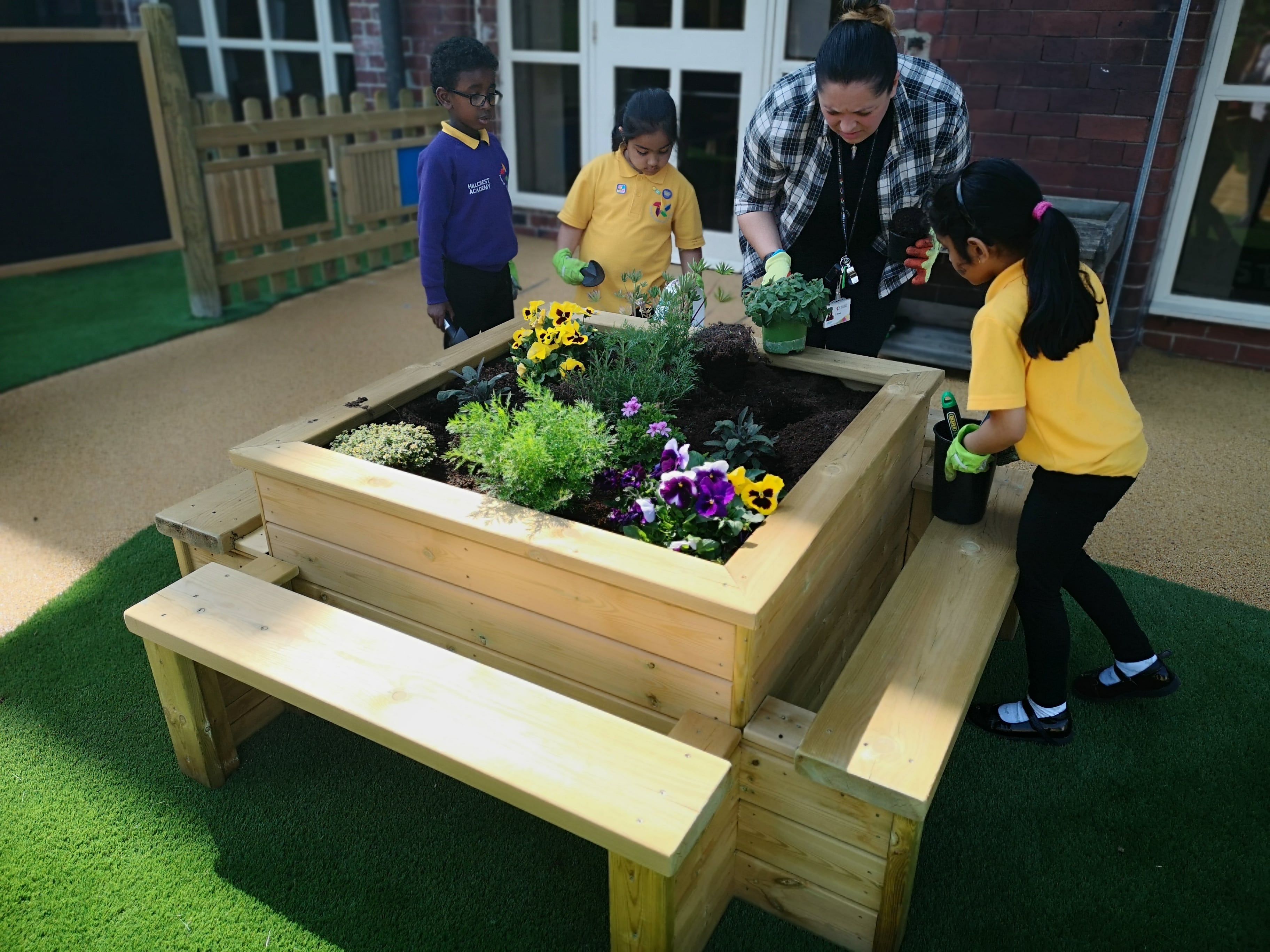
The value of good storage solutions can never be underestimated here! Try to:
- Keep your classroom and playground environments decluttered. Good, practical storage solutions can not only help your class to stay organised and make quick access to resources really easy - but having things tidied away and only brought out when they’re needed can significantly reduce visual distraction, and help children to remain focused on their task in hand.
- Avoid using overly bright, fluorescent lighting or lights that flicker or buzz in the classroom (you know it when you hear it!). Turn the lights off and work with/in natural daylight wherever possible. Outdoor learning in natural daylight is much more visually appealing and calming for most children.
- Schedule in time for natural play, particularly gardening activities. Having an area of the playground reserved for digging, planting and growing seasonal varieties of plants, fruits, vegetables and flowers provides countless incredible learning opportunities for children. It’s an opportunity for children to experience variety in natural colours and offers something of a sensory feast at different times throughout the year.
- Have natural timber playground equipment installed, which is more visually calming than alternative harsh metals and overly garish plastics. Some colour is of course important - it can be gently stimulating and inspiring and absolutely what children need - but it’s all about balance! We’re always here to help with this!
- Think about the light when planning a playground design - where it falls throughout the day, areas that may be too bright or areas that need brightening up! Gazebos and timber canopies can provide shelter from bright sunlight (as much as heat, wind and rain) to keep your outdoor learning environment visually comfortable. Playground mirrors and colourful Sensory Play Equipment can open up and bring more light and colour to dull and gloomy spaces.
See: Nature and Planting, Playground Storage, Sensory Play Equipment, Giant Playground Mirror, Outdoor Classrooms, Millhouse Indoor Storage
Touch
Our tactile sense is what gives us the ability to touch and perceive the world around us through our skin. Through our sense of touch we can perceive temperature, traction, pressure and pain.
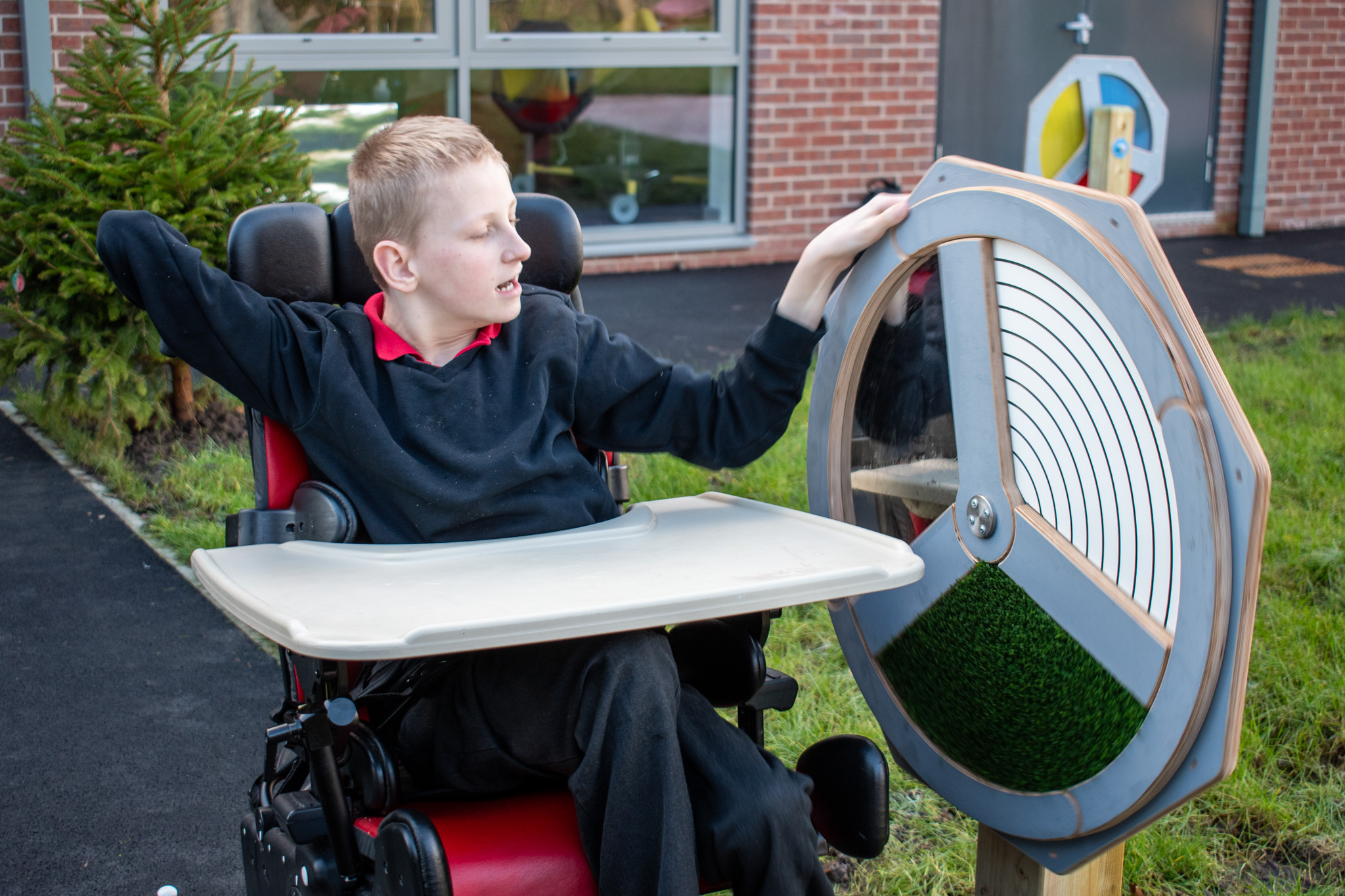
A child who has difficulties with their tactile sense may have an unusually high or low pain threshold. They may dislike or seek out certain textures such as their clothing, certain foods, toys and many other surfaces. Try:
- Making marks and patterns with hands, sticks or other resources in sand or mud.
- Cooking up a storm in your mud kitchen using a variety of different resources and utensils.
- Digging and gardening activities.
- Playing at a water table or water wall.
- Playing with different textured resources - sand, jelly, rice, glitter, dough, foam, pasta etc at a tuff spot table.
- Threading and weaving activities.
- Enjoying outdoor art and mark-making with different mediums and tools including paints, chalk, brushes, twigs, sponges and fingers.
- Use your fingers to explore sensory panels on playground walls and fences.
- Providing different textured playground surfaces to move around on - for example contrast areas of Playturf Artificial Grass with areas laid to Wetpour.
See: Nature and Planting, Mud Kitchens, Mud, Sand and Water Play, Tuff Spot Table, Weaving Panels, Sensory Panels, Playground Surfacing
Sound
Our auditory sense is how we hear, perceive, recognise and make sense of sounds. This can include volume and pitch, where a sound is coming from, how long it lasts for, and differentiating between different sounds.
A child who has difficulties with processing sound may struggle to hear some sounds or may be able to hear noises that others don’t detect. They may not be able to ‘tune out’ certain sounds, and some, or too much sound may be intolerable.
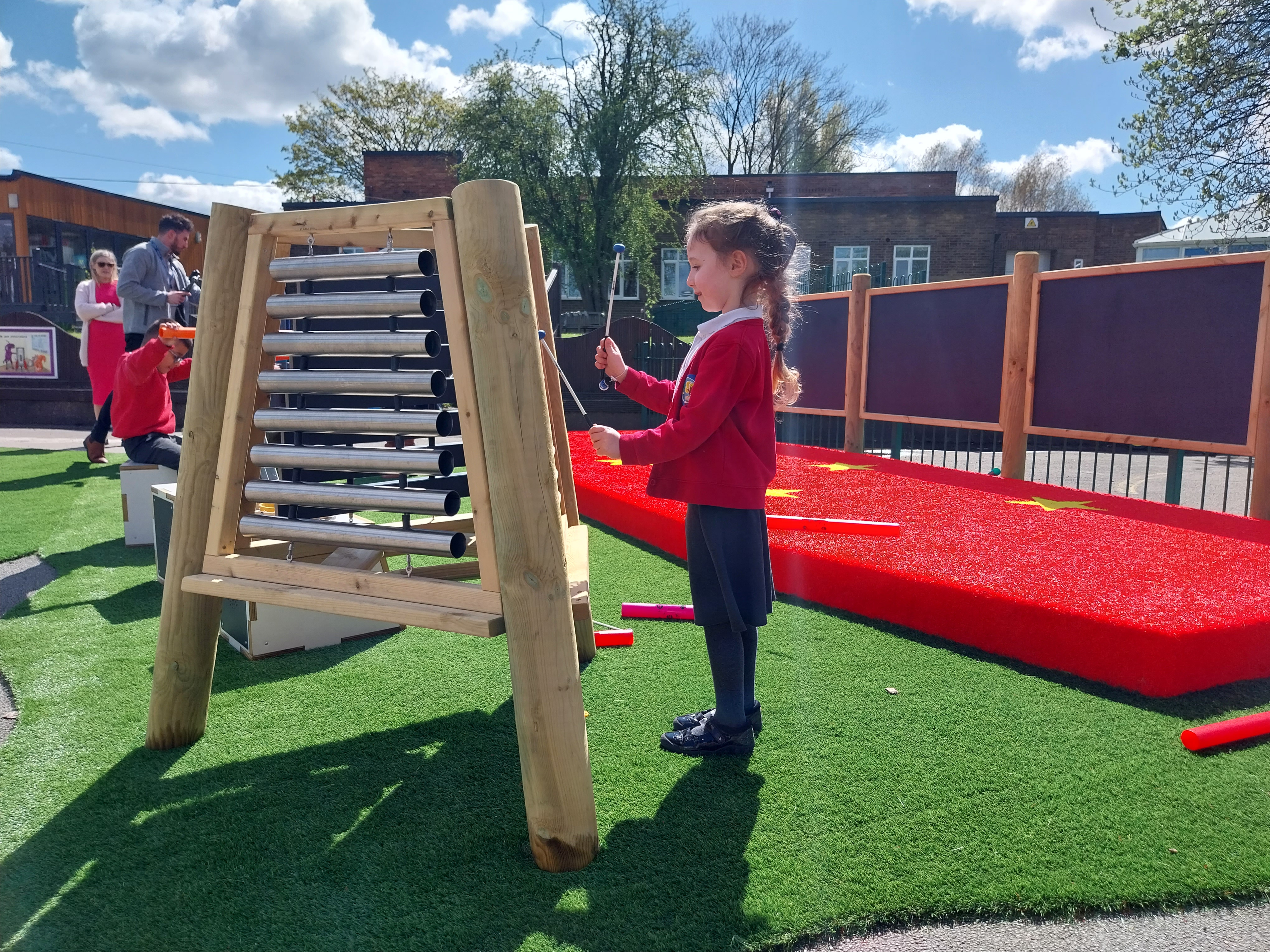
They may also have difficulties recalling and using information they hear, and with controlling the volume of their own voice. They may experience delays in language development.
Calming and organizing auditory input activities in the playground can include:
- Listening to and making music outdoors.
- Playing clapping and rhythm games using your hands or musical instruments.
- Going on a ‘sound hunt’ with challenges to try to listen for specific sounds in nature and around us (birdsong, the effect of wind, cars passing by). Help them by positioning them closer to sounds they are listening for.
- Listening to moving water - water travelling through a water wall, splashes at the water table, rain on the canopy roof or the roof of a playhouse.
- Enjoying outdoor reading together. Ask the child to point to certain items on the page or related items in the environment eg ‘something green’.
- Play ‘Simon Says’ games on the floor or on your climbing equipment, giving verbal instructions for a child to listen to and follow appropriate to their age and level of ability. This is a fun way to engage and help them learn how to use auditory information.
- Take a ride in one of Pentagon’s Sensory Tunnels, or see what sounds you can make with a Sensory Spinner!
It’s important to alert a child with auditory processing difficulties, using visual or tactile cues, to ask them to listen before giving them a message or instruction about a particular activity. Give one direction at a time, and give them more time to analyse an instruction and put it into action.
See: Sensory Play Equipment, Musical Play Equipment, Water Walls and Damming Stations, Den Making and Playhouses, Storytelling Pack
Smell
Certain scents can stimulate or calm a child, whereas others (perhaps too strong or complex) can cause a sensory overload. Typically, scents such as vanilla, chamomile and lavender are known to calm and relax, whereas citrus or mint smells are more energising.
You’ll need to exercise caution with scent-based activities for children because not all scents or types of essential oils are suitable for them. Check for allergies first.
Bearing this in mind, when it comes to exploring and developing the sense of smell in the playground, try:
- Going on a ‘scent hunt’ in the playground. This works best if you have a school field or a planting/gardening area so you can find variety in scents at different times of year. Stock planters with different scented and easy to maintain flowers and herbs, such as lavender, rosemary, thyme, sage for children to explore with their noses, describe and talk about preferences. Even simple leaves and grass have their own scent and can be used in this activity. Notice how crushing petals and leaves can release their scent and make it seem stronger.
- Use your tuff spot table or picnic table to create a scent display for children to explore and identify different items. Add different essential oils to play dough, display foods with different scents such as citrus fruits, jars of herbs and spices, soaps, flower petals, coffee granules and other household items. Talk about whether they smell good or bad, and how the smell of food items might contribute to their flavour.
- Add different scented soap, shower gel or bath bombs to your water table.
- Using your mud kitchen for children to get messy mashing up different scented items to really release their scent. Crushing fruits and flowers releases a stronger scent to help children recognise and identify them.
See: Water Play Packages, Nature and Planting, Picnic Tables, Tuff Spot Tables, Mud Kitchen
Taste
Oral sensory processing involves tactile and proprioception senses as well as taste. And although taste happens on the tongue, how a taste is perceived is also strongly influenced by the sense of smell.
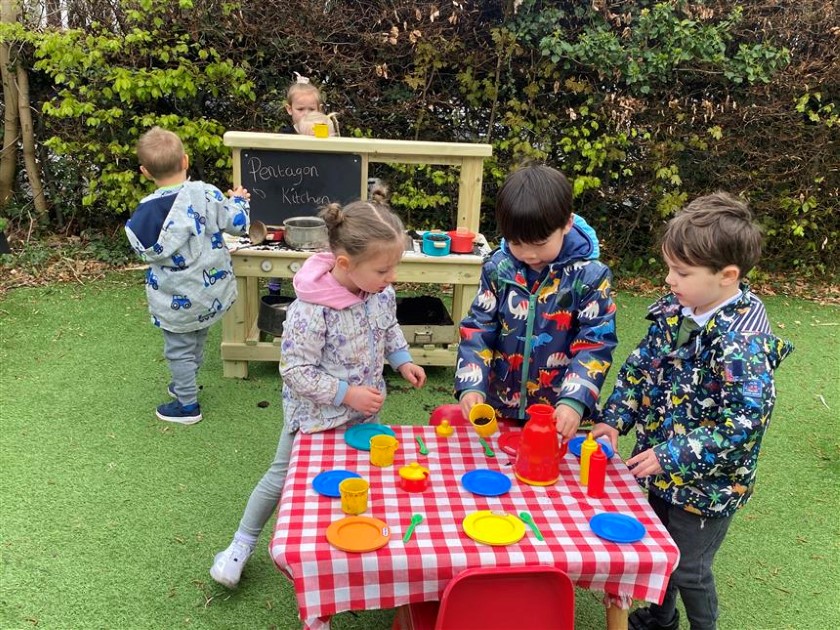
Children who have sensory processing difficulties may struggle with their sense of taste. If they have a hyper-senstive sense of taste they may be ‘picky’ eaters and may really struggle with certain tastes, textures and food temperatures. If they have a hypo-sensitive sense of taste, they may seek out much stronger flavours, and seasoning, and may like to chew on items that aren’t edible, such as their clothing.
To address struggles with a child’s sense of taste, try:
- Encouraging lots of messy play in the playground. Most of us probably grew up being told not to play with our food (!) but actually messy play is a really great way for children to explore, and get used to, lots of different textures. If a child is a ‘picky’ eater, you can slowly introduce new textures and scents to them by encouraging them to play with their hands at a tuff spot table or mud kitchen. Try tinned beans, tinned spaghetti, jelly, soup etc
- For children who like to chew or suck things, straws are great fun to introduce to your water table. Let them blow on or through the water to create bubbles and patterns - it’s proprioceptive input through the mouth.
- In the same way, straws are great for blowing paint across paper on an art easel or across a tuff spot table - they can make some crazy artistic patterns in the process!
- Set up a ‘playground cafe’ in your playhouse. Through role play children can explore different types of food.
- Grow easy-to-grow herbs and fruits in your planters or gardening area. Support children to grow their own, pick them and bring them inside to wash them before testing and trying different tastes, smells and textures - strawberries and tomatoes are popular in the summer but some herbs such as rosemary and sage offer an almost year-round supply.
- Enjoy a ‘taste test’ gathered around together at your picnic table. You can try all sorts of different foods here to suit your class group and with a close eye on any allergies. The best way to really try different tastes is to stick out your tongue and dry it with a paper towel first. Take a sip of water in between different flavours. Try something salty, something sweet, something citrus or tangy, something soft, something crunchy etc. Talk about what they notice, and how their tongue works to taste the food.
For children who are anxious about this activity, the playground is the perfect place as it’s open and feels less restrictive/easier for them to move away. It doesn’t matter if they don’t want to taste something first time round.
Just encouraging them to have a look and see what’s going on is a good place to start, with the aim of getting more comfortable around different foods. They might want to try the ‘snake test’ - just a very quick lick to see what something tastes like - before being comfortable with letting something sit on their tongue for longer.
See: Den Making and Playhouses, Nature and Planting, Storytelling Pack, Picnic Tables
Conclusion
Hopefully, you now have a stronger understanding of how you can support children with sensory processing issues, whilst creating plenty of opportunities for inclusive play.
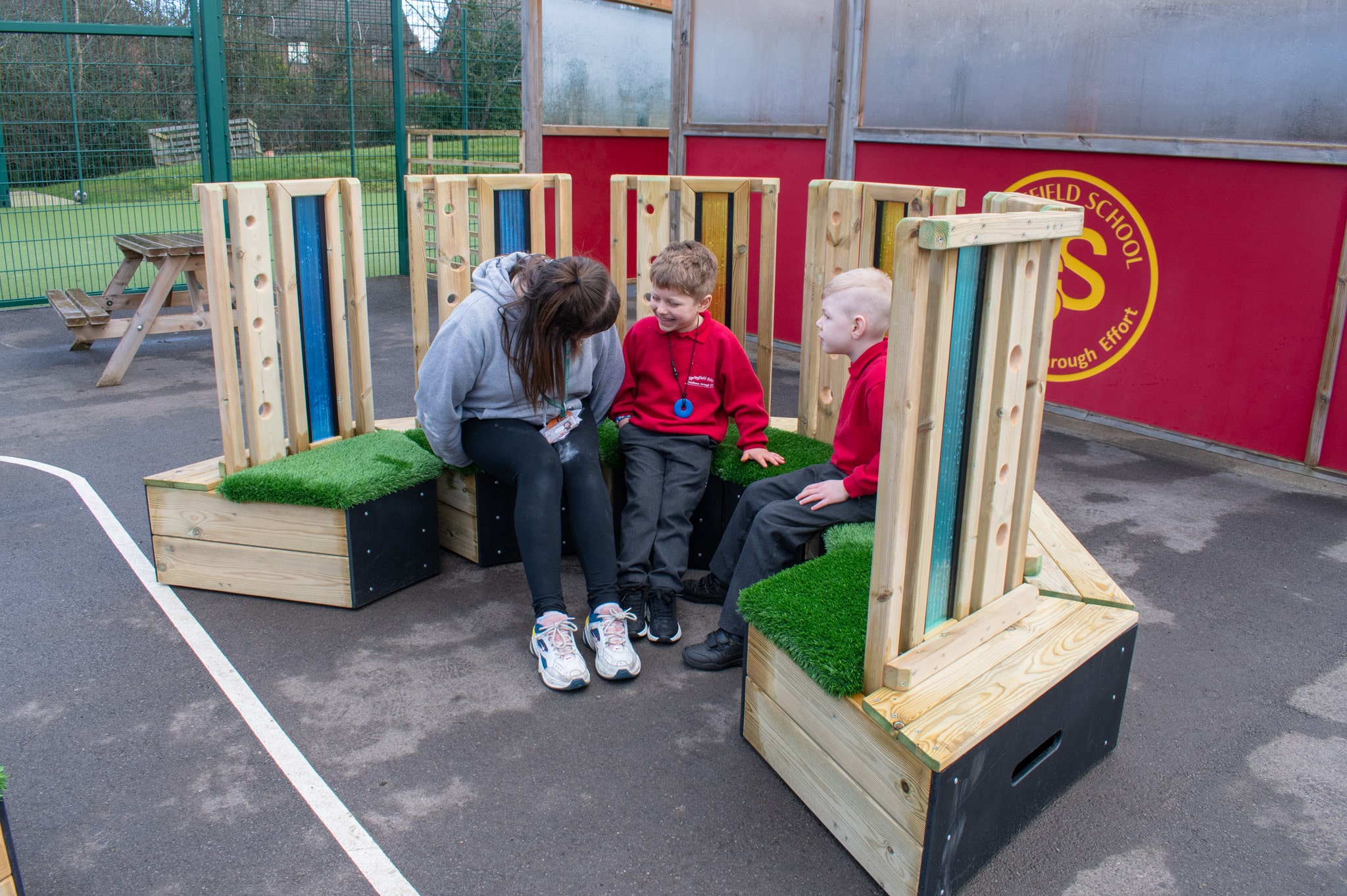
By offering ways to help children improve their sensory processing skills, your setting will demonstrate the inclusivity and awareness that Ofsted expects from all settings.
At Pentagon Play we work in conjunction with teaching professionals to develop products that meet children’s learning and developmental needs. Our experienced team will work with you to design outstanding spaces that perfectly suit your learning and play requirements. Contact us today for free, expert advice!



